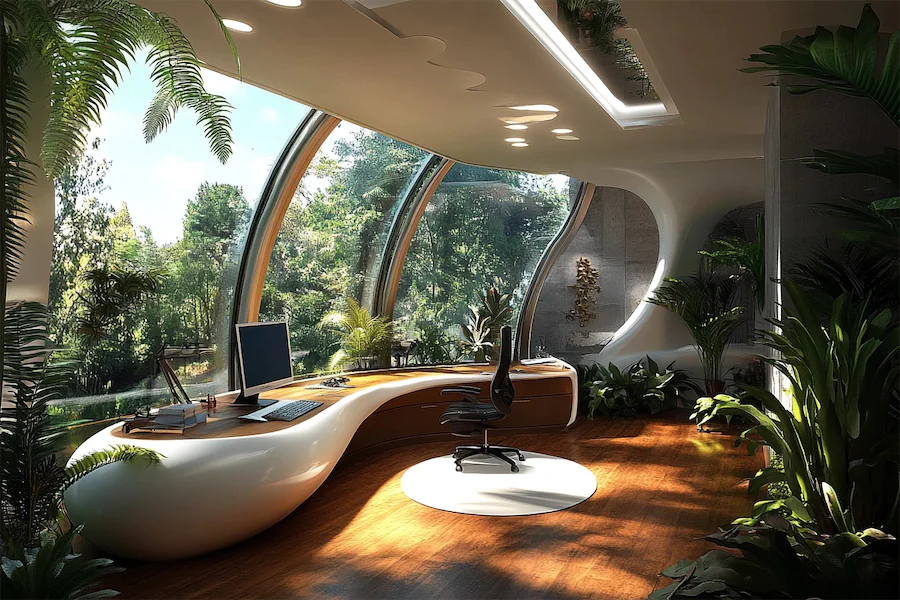An Organic Office Room integrates natural elements and materials to create a harmonious, eco-friendly workspace that promotes well-being and productivity.
Introduction to Organic Office Rooms
Organic office design emphasizes the use of natural materials, biophilic elements, and sustainable practices to foster a connection with nature within the workplace. This approach enhances employee well-being, reduces stress, and boosts productivity by creating a more inviting and healthful environment.
History and Origins of Organic Office Rooms
The concept of organic design gained prominence in the mid-20th century, influenced by architects like Frank Lloyd Wright, who advocated for harmony between human habitation and the natural world. In recent years, this philosophy has been applied to office spaces, aligning with the growing emphasis on sustainability and employee wellness.
Key Features of Organic Office Rooms
- Natural Materials: Incorporation of wood, stone, bamboo, and natural fibers in furniture and finishes to bring an earthy feel to the office.
- Biophilic Elements: Integration of indoor plants, green walls, and natural light to enhance the connection with nature.
- Organic Forms and Shapes: Use of furniture and architectural elements with curves and non-linear patterns that mimic natural forms.
- Sustainable Practices: Implementation of eco-friendly materials and energy-efficient systems to reduce the environmental footprint.
- Neutral Color Palette: Application of earthy tones and natural colors to create a calming atmosphere.
Applications of Organic Office Rooms
This design style is versatile and can be applied to various office settings:
- Corporate Offices: Creating a sustainable and health-focused environment that reflects corporate responsibility.
- Home Offices: Designing a tranquil and inspiring workspace within a residential setting.
- Co-working Spaces: Establishing a welcoming and flexible environment that caters to diverse workstyles.
Considerations When Designing an Organic Office Room
- Indoor Air Quality: Select low-VOC materials and incorporate plants that improve air quality.
- Natural Light: Maximize the use of natural light to enhance mood and reduce energy consumption.
- Acoustics: Use natural materials and design elements that aid in sound absorption to maintain a comfortable noise level.
- Ergonomics: Ensure that furniture not only reflects organic aesthetics but also provides ergonomic support.
Conclusion
An Organic Office Room offers a sustainable and health-conscious workspace that fosters a strong connection with nature. By thoughtfully integrating natural materials, biophilic elements, and sustainable practices, one can create an environment that enhances well-being and productivity.
